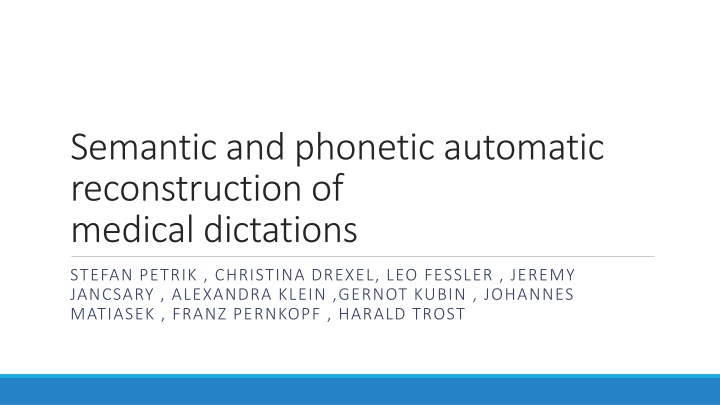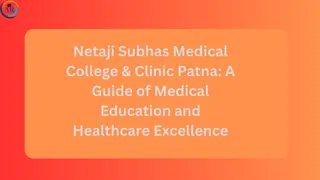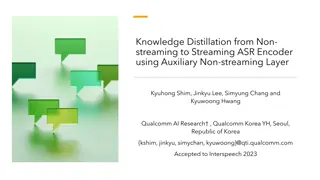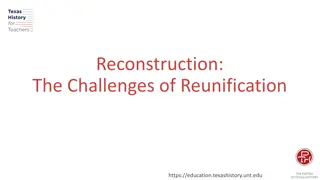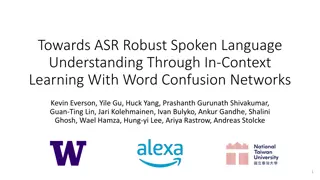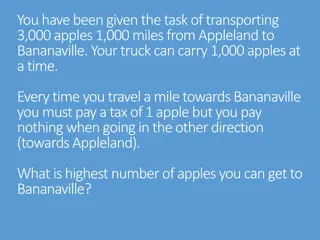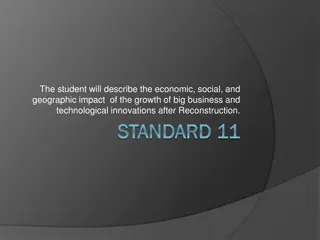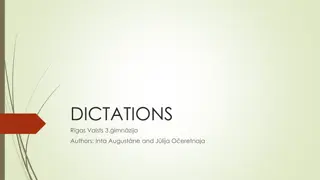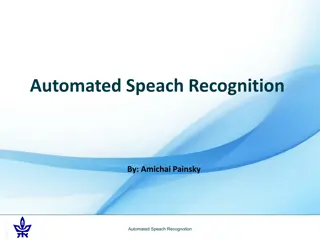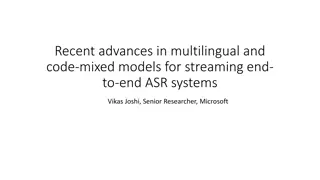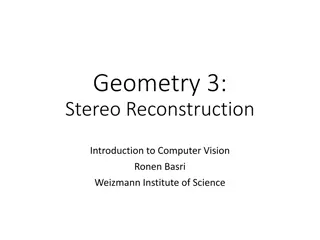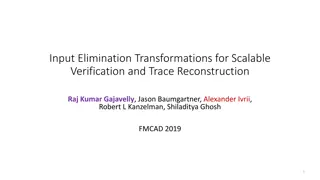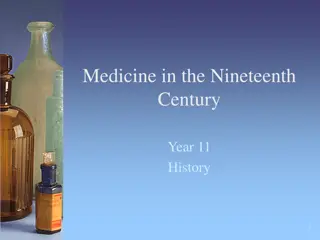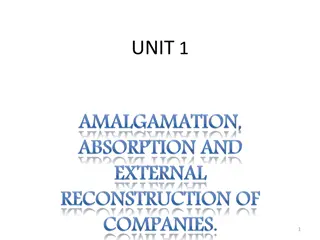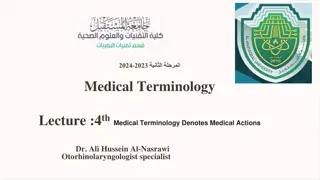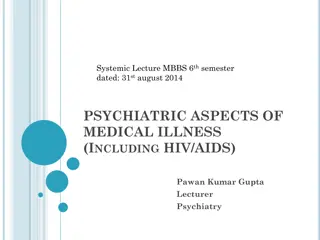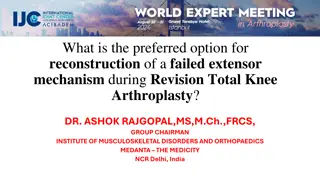Medical Dictation Reconstruction Sparked by ASR Advancements
Dive into the SPARC approach revolutionizing medical dictation transcription, leveraging semantic and phonetic analyses to reconstruct literal transcripts with precision and efficiency. Discover how ASR systems are evolving through innovative methodologies and data-driven insights.
Uploaded on Feb 18, 2025 | 4 Views
Download Presentation

Please find below an Image/Link to download the presentation.
The content on the website is provided AS IS for your information and personal use only. It may not be sold, licensed, or shared on other websites without obtaining consent from the author.If you encounter any issues during the download, it is possible that the publisher has removed the file from their server.
You are allowed to download the files provided on this website for personal or commercial use, subject to the condition that they are used lawfully. All files are the property of their respective owners.
The content on the website is provided AS IS for your information and personal use only. It may not be sold, licensed, or shared on other websites without obtaining consent from the author.
E N D
Presentation Transcript
Semantic and phonetic automatic reconstruction of medical dictations STEFAN PETRIK , CHRISTINA DREXEL, LEO FESSLER , JEREMY JANCSARY , ALEXANDRA KLEIN ,GERNOT KUBIN , JOHANNES MATIASEK , FRANZ PERNKOPF , HARALD TROST
About ASR in Medical Dictation. Reconstruction of literal transcripts to improve . Retraining of Standard Language Model with reconstructed transcripts.
Introduction Introduction ASR eliminated the need to type whole documents instead the medical transcriptionists just need to do post-processing which too is a bit time consuming and tedious To train the ASR system to perform better literal transcripts are required
A way of getting over this problem is unsupervised or lightly supervised learning. Although these methodologies reduce WER they do not give explanations for the mismatch
SPARC approach A framework for reconstruction of literal transcripts from the recognition result and final medical reports Available data: Audio Files, Draft Transcripts and Final report Error Categorization: recognition error or Reformulation
The SPARC approach to text reconstruction. Based on semantic and phonetic similarity measurements, chunks of written and recognized text can be classified as either matches, reformulations, corrections or a combination of both. Phonetics similar dissimilar Semantics similar Match Reformulation dissimilar Correction Reformulation and correction
Data Description Define a mismatch region as a contiguous sequence of mismatch edit operations in order to establish correspondences between matched words. A statistical study of a corpus of 80,000 medical reports with 38 million words revealed an average length of 2.3 words for a mismatch region and an average occurrence of 3.6 times for this region within the corpus.
Text alignment Text alignment During alignment, both input documents are viewed as sequences of tokens. A generalized Levenshtein alignment algorithm is then applied to these sequences. Based on the algorithm three actions are performed: Substitution Insertion Deletion
Kitten Sitting 1. Sitten substitution 2. Sittin Substitution 3. Sitting Addition
Similarity measures Similarity measures Similarity measure are used in both text alignment and reconstruction. These measures are consulted by the levenshtein algorithm to improve accuracy The measures are used to condition the reconstruction rules .
Semantic similarity To measure semantic similarity the following resources are used a reference: Unified Medical Language System WordNet lexical database The morphosyntactic information from the lexicon was worked into the finite-state transducer that is used as a morphological lexicon.
7 identical (modulo case or 5 synonymous 2 same UMLS semantic type 6 same root (only inflection) parent(word1,word2) or parent(word2,word1) 1 direct hierarchical relation between semantic types 4 morphologically derived 0 no similarity at all 3 conceptual siblings
Phonetic similarity Requires three sets of input: Phonetic symbol sequence from the recognized text The orthographic word sequence from the recognized text Word sequence from the written text
Automatic phonetic transcription In a first step, the written text is transferred to the phonetic domain with automatic phonetic transcription (APT). This is done by a simple lexicon lookup A simple regular expression syntax was defined to encode the possibly many speaking and pronunciation variants in a single string
Automatic syllabification An online automatic syllabification algorithm was implemented to determine syllables directly from the texts. For syllabification, a number of competing syllabification constraints are applied to the input words. But due to lack of primary stress information the noonset Constraint was removed
Combined similarity measurement The semantic and phonetic scoring functions are used as building blocks for a combined scoring function that best exhibits the behavior that is required for further processing. Semantic matching is applied in the first place to filter out clear cases and avoid overstretched regions of correspondence, before phonetic matching is used to find detailed matches.
Text reconstruction Text reconstruction Deformatting Identifying and retracing moved blocks Application of reconstruction rules Reconstructing moved blocks
Rule engine The reconstruction rules that are interpreted by this engine provide a mechanism for inspecting a sliding window that is moved over multiple columns according to their alignment rule rulename match -w/window regexp/ # inspect sliding window do # specify reconstruction result done
Rule definitions 1. Baseline: 2. Recognised-only 3. Written-only 4. Context (CTX) 5. Overlap, greedy 6. Overlap, selective
Experiments Experiments The quality of the reconstruction was tested. The speech recognition performance using reconstructed texts is measured
Reconstruction quality Metrics: Recall = | COR | / |COR | + | MISS | Precision = | COR | / |COR | + |WRONG| harmonic mean F1
Rule-based vs. data-driven reconstruction k-NN NN SVM
Automatic speech recognition The SPARC method was compared to the standard method for language model training and to a random generation of reconstructed text.
